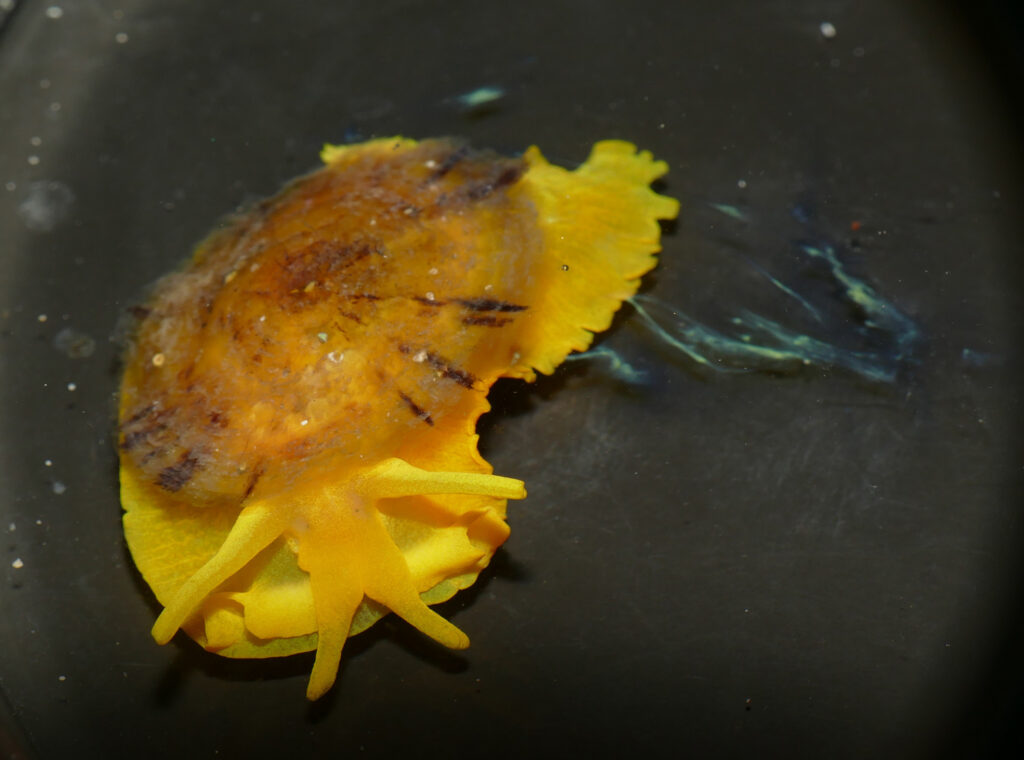A Question of Tentacles? The Evolution of Snails in a New Light
Zoologische Staatssammlung München
Four instead of only two tentacles located on their heads: This feature could be one of the reasons for the vast diversity among snails. Using genetic analysis, researchers at the SNSB and the University of Tokyo have discovered that snails began to develop four tentacles instead of two about 300 million to 400 million years ago – geologically just prior to the evolutionary explosion, which produced nearly 40 percent of all mollusk species alive today. The scientists published their findings in this week’s journal Scientific Reports.
All senses come together in their tentacles: Snails smell, taste, touch or see with their sensory antennae. Around half of all snails have tentacles. The other half, the so-called Euthyneura, possess four. In their case, the senses of smell and taste, for example, operate seperately.
Researchers from Munich and Tokyo have now discovered so-called “missing links” – absent links of evolution – between the aforementioned two groups of snails: The antennae on the heads of miniscule marine snail species of the genera Parvaplustrum and Tjaernoeia are split fork-like at their ends. The nerve cords in these snails’ antennae almost accumulate at the base and then split toward the end. “This form of sensory antennae was previously unknown – snails usually had either one pair of antennae or two, but nothing inbetween”, explains Dr. Bastian Brenzinger, a snail researcher at the Zoologische Staatssammlung München and lead author of the study.
Scientists at the Zoologische Staatssammlung München and the University of Tokyo have analyzed much data on marine and terrestrial snails, some of which are tiny, in order to discover their evolutionary history. Some of them are only a few hundred micrometers long, such as the marine snail Tjaernoeia exquisita with a body length of roughly half a millimeter – one of the smallest living snail species. With the help of three-dimensional reconstructions, the snail researchers made the animals’ head anatomy as well as the central nervous system visible.
A deteailed diagnosis of the snails’ genetic data allowed experts new insights into the past and into evolutionary relationships. In comparison with anatomical charts, the genetic analyses showed that the recently discovered “fork-antennea snails” make up a very original part of the group of “four-antennae snails”. They are opposed by all remaining “two-antennae snails”, which are developmentally older. The researchers assume that the acquisition of the improved head sensors took place in the ocean of the Paleozoic, thus at a time when today’s continents were still connected as the supercontinent Gondwana in the southern hemisphere. The “four-antennae” feature has been successful up until this very day: as it seems in all terrestrial snails native to Germany, but also in many aquatic snails, especially marine nudibranchs. Over thirty thousand snail species have this head feature.
“Possibly the changes in the sensors on snails’ heads are a key event in their history, an event that has been overlooked so far. It could even be related to the explosive expansion of snails around 220-320 million years ago. After that, there was an enormous increase in diversity and in the number of species”, says Dr. Bastian Brenzinger whilst interpreting the study.
Publication:
Brenzinger, B., Schrödl, M. & Kano, Y. Origin and significance of two pairs of head tentacles in the radiation of euthyneuran sea slugs and land snails. Sci Rep 11, 21016 (2021). https://doi.org/10.1038/s41598-021-99172-5
Contact:
Dr. Bastian Brenzinger & Prof. Dr. Michael Schrödl
Zoologische Staatssammlung München (SNSB-ZSM)
Münchhausenstr. 21, 81247 München
Tel.: 089 8107 – 137/ -142
E-Mail: brenzinger@snsb.de, schroedl@snsb.de



